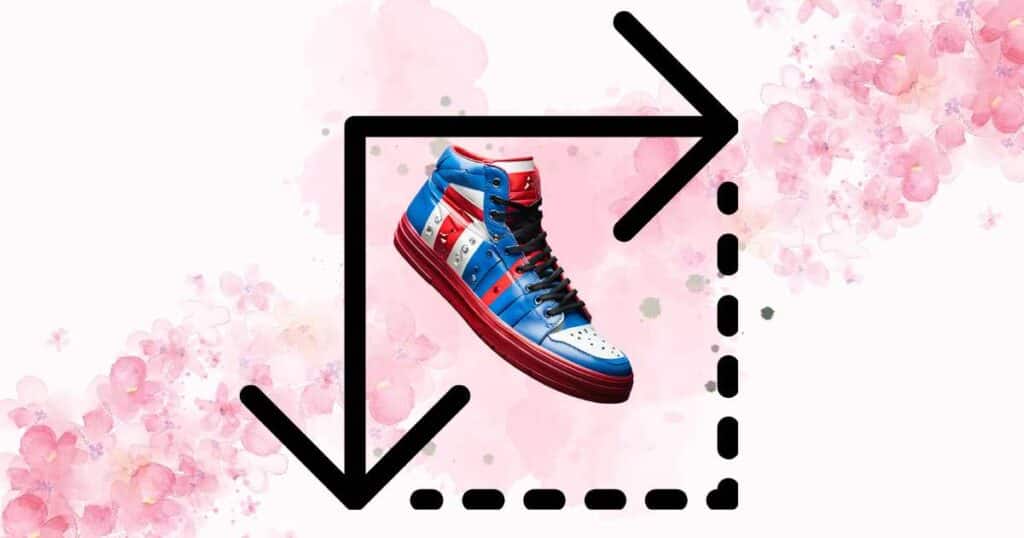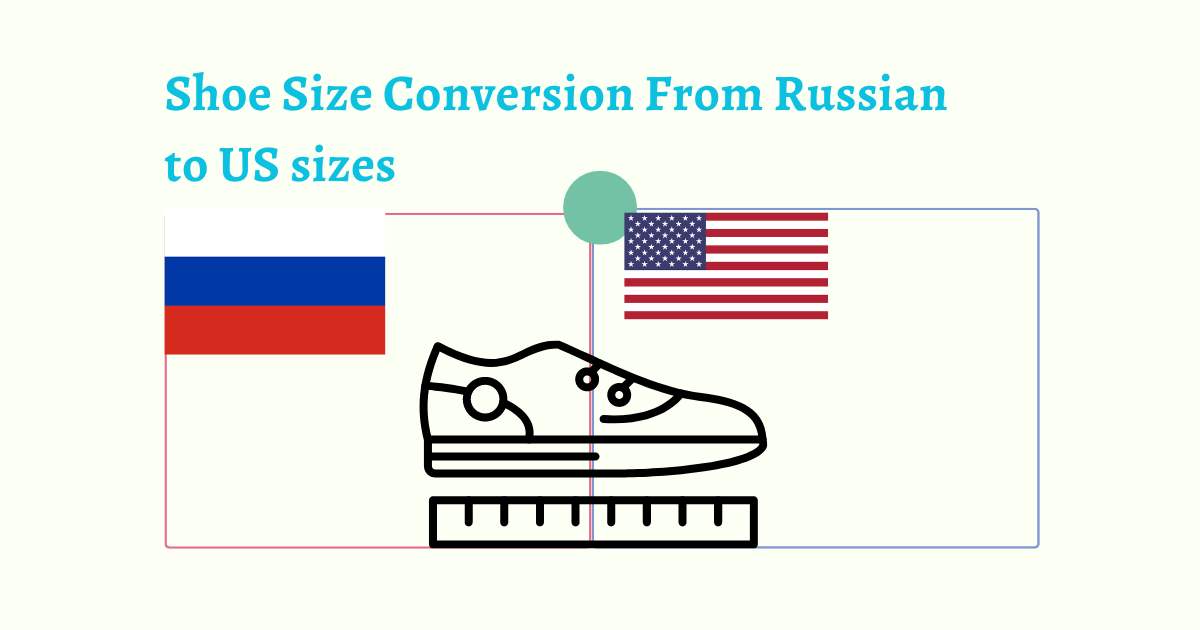Have you ever tried to figure out how Russian shoe sizes compare to US sizes? It can be tricky! If you want to confidently buy shoes that fit, I’m here to help. I’ve looked into this a lot, and I’ve got some easy-to-use charts and tips to make it simple. Whether you’re shopping online or traveling, you’ll be able to find the perfect shoes after reading this
Russian to US Shoe Size Conversion Charts
Russian Size (EU) to US Men’s Size:
| Russian Size (EU) | US Men’s Size |
|---|---|
| 35 | 3.5 |
| 36 | 4 |
| 37 | 5 |
| 38 | 6 |
| 39 | 7 |
| 40 | 7.5 |
| 41 | 8 |
| 42 | 9 |
| 43 | 10 |
| 44 | 11 |
| 45 | 12 |
| 46 | 13 |
These tables provide the conversion of Russian shoe sizes (in EU measurements) to corresponding US men’s sizes. For instance, if you typically wear a size 39 in Russia, your equivalent size in the US would be 7.
Russian Size (EU) to US Women’s Size:
| Russian Size (EU) | US Women’s Size |
|---|---|
| 35 | 5 |
| 36 | 6 |
| 37 | 7 |
| 38 | 8 |
| 39 | 9 |
| 40 | 9.5 |
| 41 | 10 |
| 42 | 11 |
Similarly, these tables offer the conversion of Russian shoe sizes (in EU measurements) to corresponding US women’s sizes. For example, if you typically wear a size 37 in Russia, your equivalent size in the US would be 7.
Russian Size (EU) to US Kids’ Size:
| Russian Size (EU) | US Kids’ Size |
|---|---|
| 28 | 10 |
| 29 | 11 |
| 30 | 12 |
| 31 | 13 |
| 32 | 1 (Youth) |
Lastly, these tables present the conversion of Russian shoe sizes (in EU measurements) to corresponding US kids’ sizes. For instance, if your child typically wears a size 30 in Russia, their equivalent size in the US would be 12.
These comprehensive conversion tables aid shoppers in accurately determining their shoe sizes across different regions, ensuring a comfortable fit when purchasing shoes internationally.
Understanding Sizing System

Understanding the nuances of shoe size conversion between Russian and US sizing is essential for individuals seeking to purchase footwear across international borders. The need for a comprehensive shoe size conversion guide arises from the fact that sizing standards can significantly vary between countries and regions. This variation is influenced by factors such as measurement systems, cultural preferences, and manufacturing practices. Without a reliable guide, consumers may encounter difficulties in accurately determining their correct size, leading to potential inconveniences and returns.
Understanding Russian Shoe Sizes
Russian shoe sizes are typically measured using the European sizing system (EU). In this system, the size corresponds to the length of the foot in centimeters. However, it’s crucial to note that Russian shoe sizes may differ from the EU standard in some cases, and certain brands might have their own variations. Additionally, Russian sizing tends to be unisex, meaning that the same numerical size is used for both men and women. This unisex approach can be a unique aspect to consider when navigating the Russian shoe market.
US Shoe Sizing System
The United States employs a distinct sizing system that is separated into men’s and women’s categories. The US sizing system is based on a scale that accounts for both the length and width of the foot. While the numerical size corresponds to the length, letters (such as D for medium or M) indicate the width. Consumers need to understand this distinction, as selecting the appropriate width is crucial for achieving a comfortable fit.
Shoe Size Conversion stands for millimeters
Russian Size (mm) to US Men’s Size:
| Russian Size (mm) | US Men’s Size |
|---|---|
| 225 | 3.5 |
| 230 | 4 |
| 235 | 5 |
| 240 | 6 |
| 245 | 7 |
| 250 | 7.5 |
| 255 | 8 |
| 260 | 9 |
| 265 | 10 |
| 270 | 11 |
| 275 | 12 |
| 280 | 13 |
These tables provide the conversion of Russian shoe sizes (in millimeters) to corresponding US men’s sizes. For example, if your foot measures 245 mm, your equivalent size in the US would be 7.
Russian Size (mm) to US Women’s Size:
| Russian Size (mm) | US Women’s Size |
|---|---|
| 220 | 5 |
| 225 | 6 |
| 230 | 7 |
| 235 | 8 |
| 240 | 9 |
| 245 | 9.5 |
| 250 | 10 |
| 255 | 11 |
Similarly, these tables offer the conversion of Russian shoe sizes (in millimeters) to corresponding US women’s sizes. For instance, if your foot measures 230 mm, your equivalent size in the US would be 7.
Russian Size (mm) to US Kids’ Size:
| Russian Size (mm) | US Kids’ Size |
|---|---|
| 200 | 10 |
| 205 | 11 |
| 210 | 12 |
| 215 | 13 |
| 220 | 1 (Youth) |
Lastly, these tables present the conversion of Russian shoe sizes (in millimeters) to corresponding US kids’ sizes. For example, if your child’s foot measures 210 mm, their equivalent size in the US would be 12.
What Really Affects Shoe Size?
Let’s break it down – finding the right shoe size isn’t just about numbers. It’s like putting together a puzzle, and the pieces include width, style, and brand differences.
Width Matters
First up, width matters. Feet comes in all shapes, and so do shoes. Pay attention to width options – it’s like making sure your shoes give your feet a cozy hug, not a squeeze.
The Style Equation
Then there’s the style equation. Think of it like this: sneakers and fancy heels are like apples and oranges. They fit differently because they’re meant for different things. Knowing the purpose of the shoe helps you pick the right size. One size doesn’t fit all when it comes to styles!
Brand Differences in Sizing
Each brand is like its own language. A size 8 from one might feel like a size 9 from another. Crazy, right? So, always check the brand’s size chart. It’s your secret weapon to decode their sizing rules.
In a nutshell, finding the perfect shoe size is a mix of width comfort, matching styles, and decoding brand secrets. Keep these in mind, and you’re on your way to the comfiest and coolest kicks!
FAQ
International sizing variations can be confusing, and converting Russian to US sizes ensures you choose the right fit, especially when purchasing from global markets.
Yes, Russian shoe sizes typically adhere to the European sizing system, with the size corresponding to the length of the foot in centimeters.
Russian sizing tends to be unisex, meaning the same numerical size is used for both men and women. However, considering width differences is crucial for achieving a comfortable fit.
Conclusion
Starting the process of converting shoe sizes is similar to learning a dance that requires three basic steps to master: width, style, and brand decoding. Imagine your feet taking the lead, making sure they embrace you snugly and at the appropriate width, let your style guide you in selecting the ideal shoe and deciphering each brand’s own language like an expert. With some easy but essential steps, you may leave size-related concerns behind and walk confidently into the world of shoes. Step out into your next shoe journey with confidence, knowing that every step will provide comfort, style, and the ideal fit.


